Lofoten islands is often referred to as one of the most beautiful landscapes in the world, and it's easy to see why. The islands are an absolute paradise for nature lovers, with stunning mountains that drop straight into the crystal-clear fjords, and white sandy beaches along the shoreline. And let's not forget about the charming red fishermen's cabins scattered throughout the area. It's a sight you won't want to miss!
Welcome to the Lofoten Islands, a true paradise for nature lovers and adventure seekers alike! This breathtaking archipelago, made up of seven interconnected islands, boasts some of the world's most stunning landscapes. From majestic mountains to serene fjords and Europe's top-ranked beach, Haukland Beach, as rated by Lonely Planet, this destination has it all. Get ready for an unforgettable journey filled with scenic road trips, outdoor activities, and relaxation on white sandy beaches.
So why not add kayaking in the Arctic Sea under the Northern Lights or horseback riding in the Midnight Sun to your bucket list?
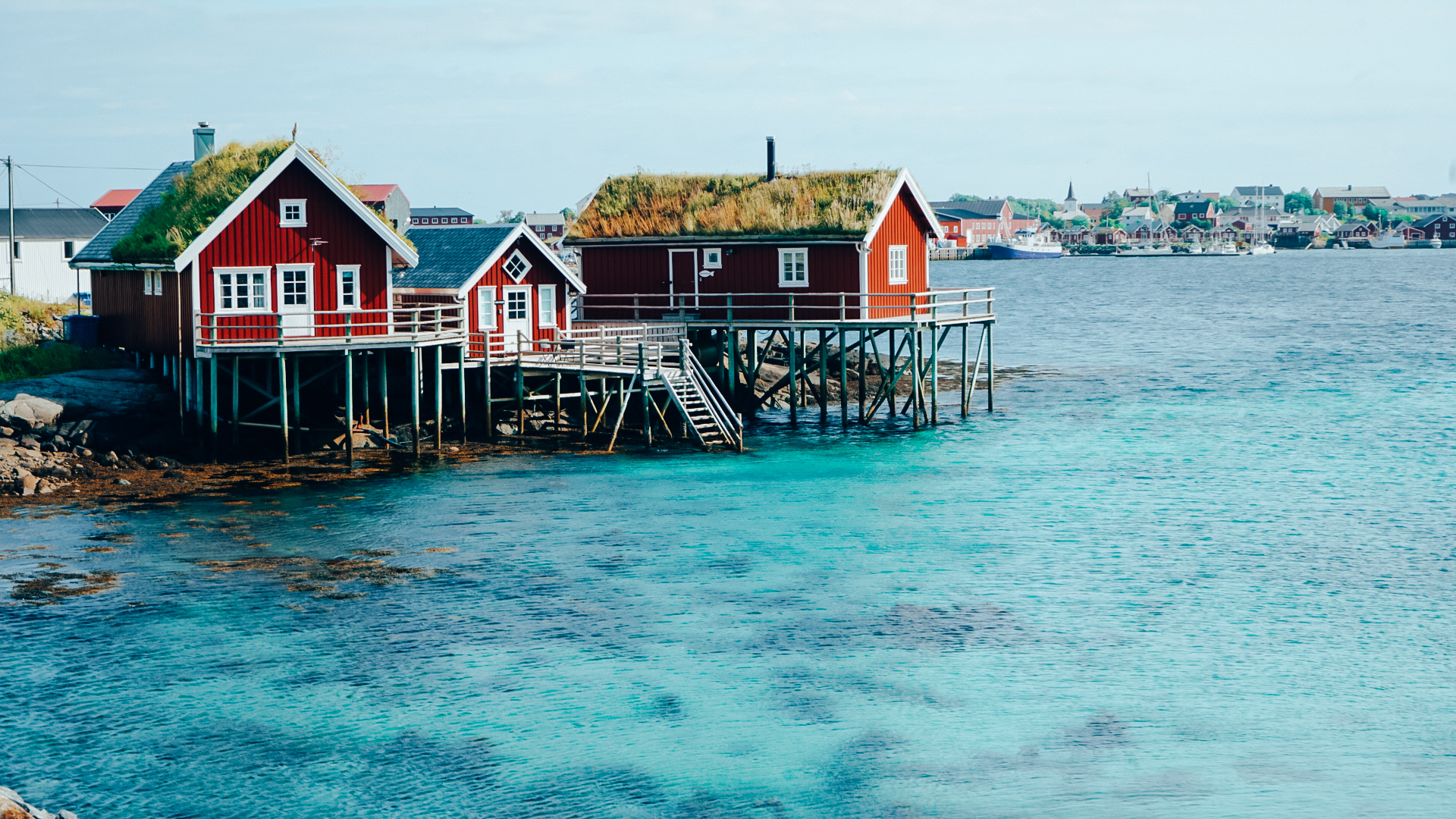
The Best Places In The Lofoten Islands
Get ready to embark on an unforgettable journey through the breathtaking Lofoten Islands. As a nature enthusiast, adventure seeker, and photography fanatic, I was blown away by the sheer beauty of this archipelago. Now, I can't wait to spill the beans and share with you the best places to visit in Lofoten Islands!
[row cols_nr="2"][col size="6"]
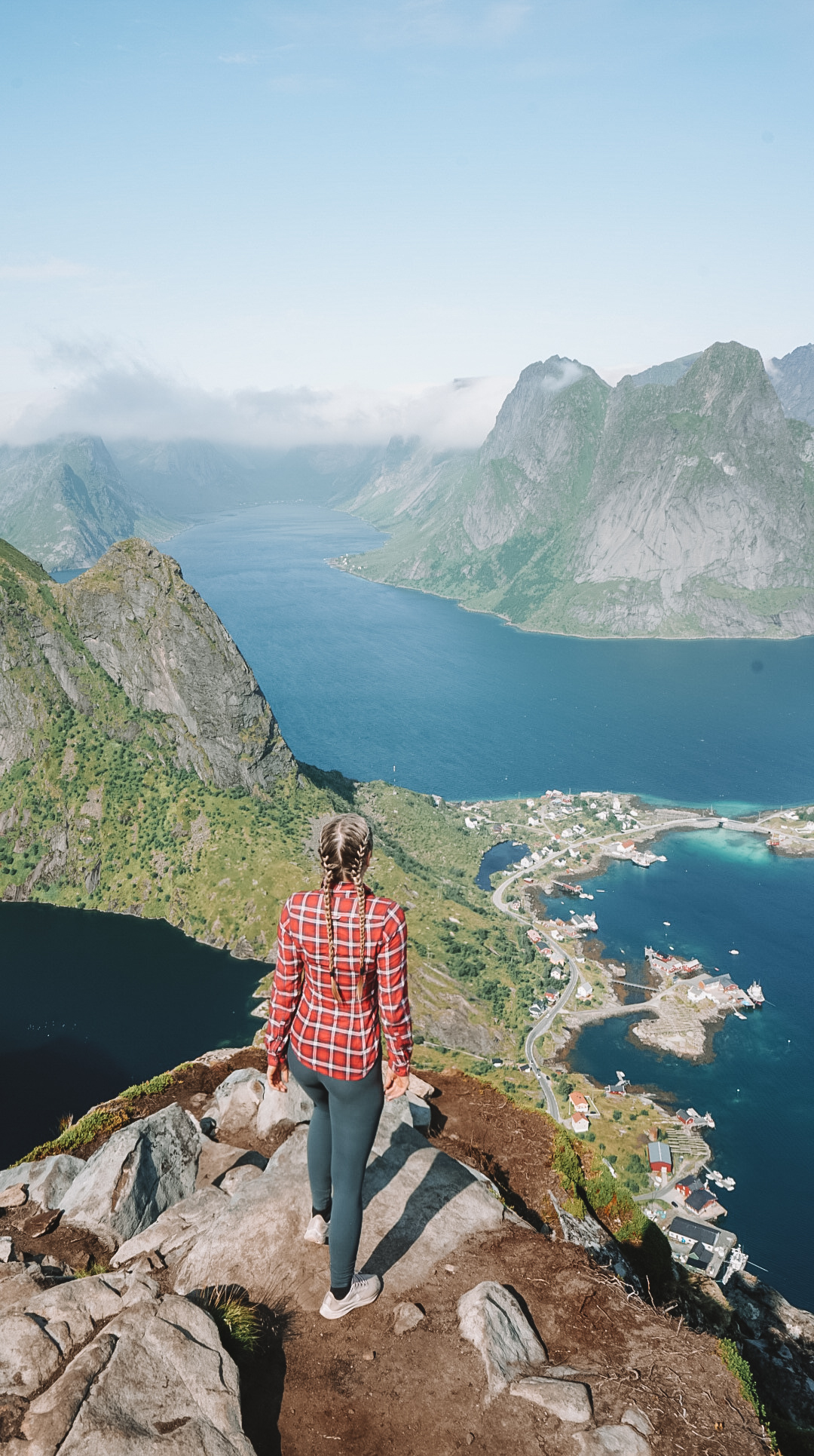
[/col][col size="6"]
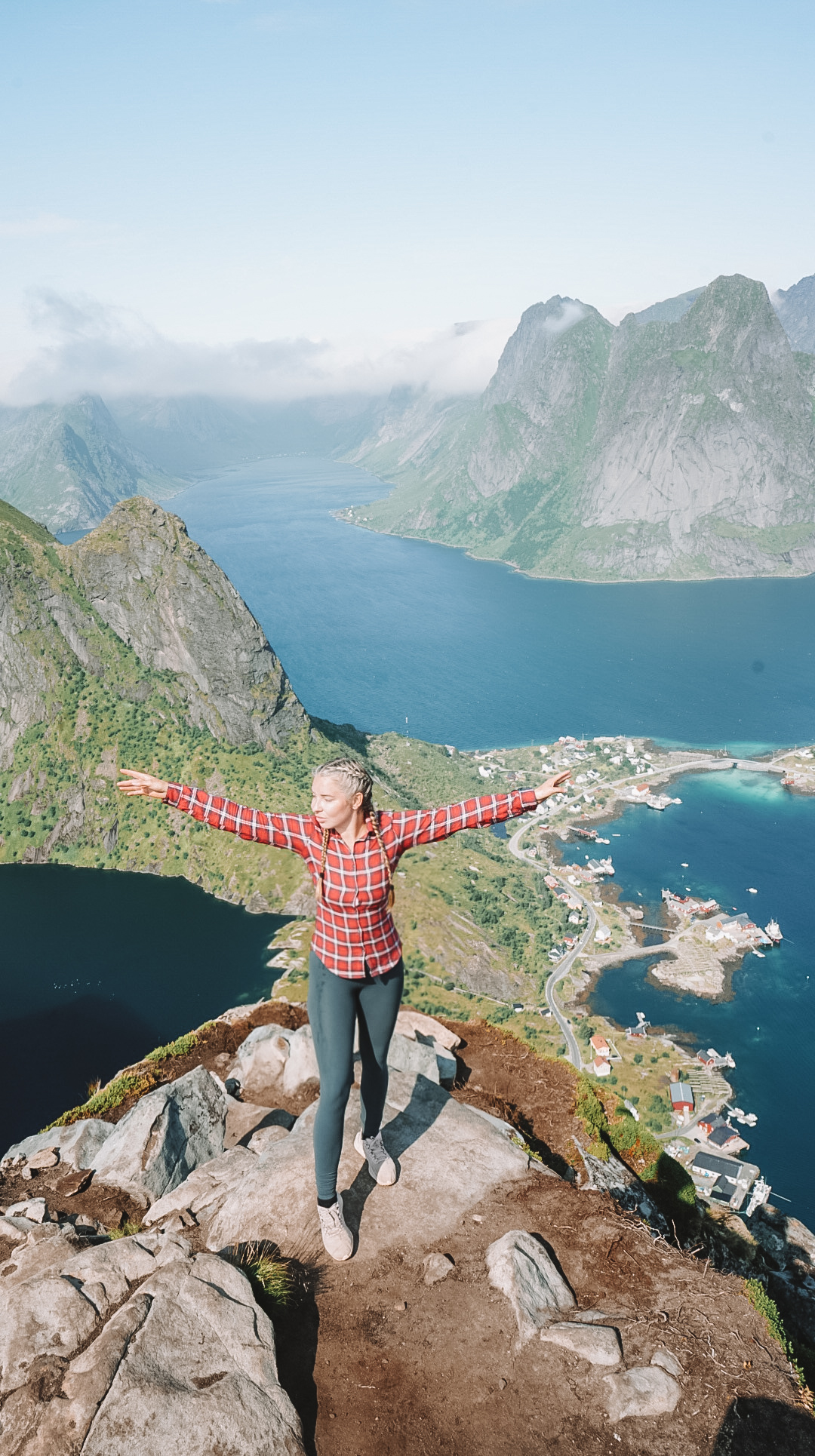
[/col][/row]
1. Reine Village and Reinebringen Mountain in Lofoten Islands
If you're looking for an Instagram-worthy destination, Reine in Norway is a must-visit spot. This charming village in the Lofoten Islands is a haven for photographers and hikers. As you approach Reine, be prepared to be mesmerized by the awe-inspiring views. The drive leading up to the village rivals Norway's famous Atlantic Road in terms of beauty. Don't forget to stop by Anita's Seafood on the tiny Sakrisøya island for some fresh seafood and stunning waterfront views. Hiking enthusiasts can tackle the Reinebringen mountain for incredible panoramic views, though it's not for the faint of heart.
Hiking enthusiasts flock to Reine to tackle the Reinebringen mountain, which offers incredible views of the surrounding landscapes. Although the hike has 1566 steps and can be challenging, the recent installation of a stone stairway makes it more accessible for travelers. Keep in mind that it's not suitable for those with a fear of heights.
For more information, check out my Reinebringen hiking guide.
[row cols_nr="2"][col size="6"]

[/col][col size="6"]

[/col][/row]
2. Hike Torsketunga - Lofoten's New Instagram Sensation
Move over Trolltunga, there's a new hiking sensation in town! At the time of writing, the hashtag #trolltunga has a whopping 193,000 posts while #torsketunga has less than 100. Torsketunga, located in Northern Norway, has quickly become a favorite among hikers and photographers. Though less popular than Trolltunga, it offers equally breathtaking views. This challenging hike features exposed sections along steep mountain sides, so it's best to join a guided tour if you're unsure of your mountain skills.
Read more about this hike here: Torsketunga hiking guide.
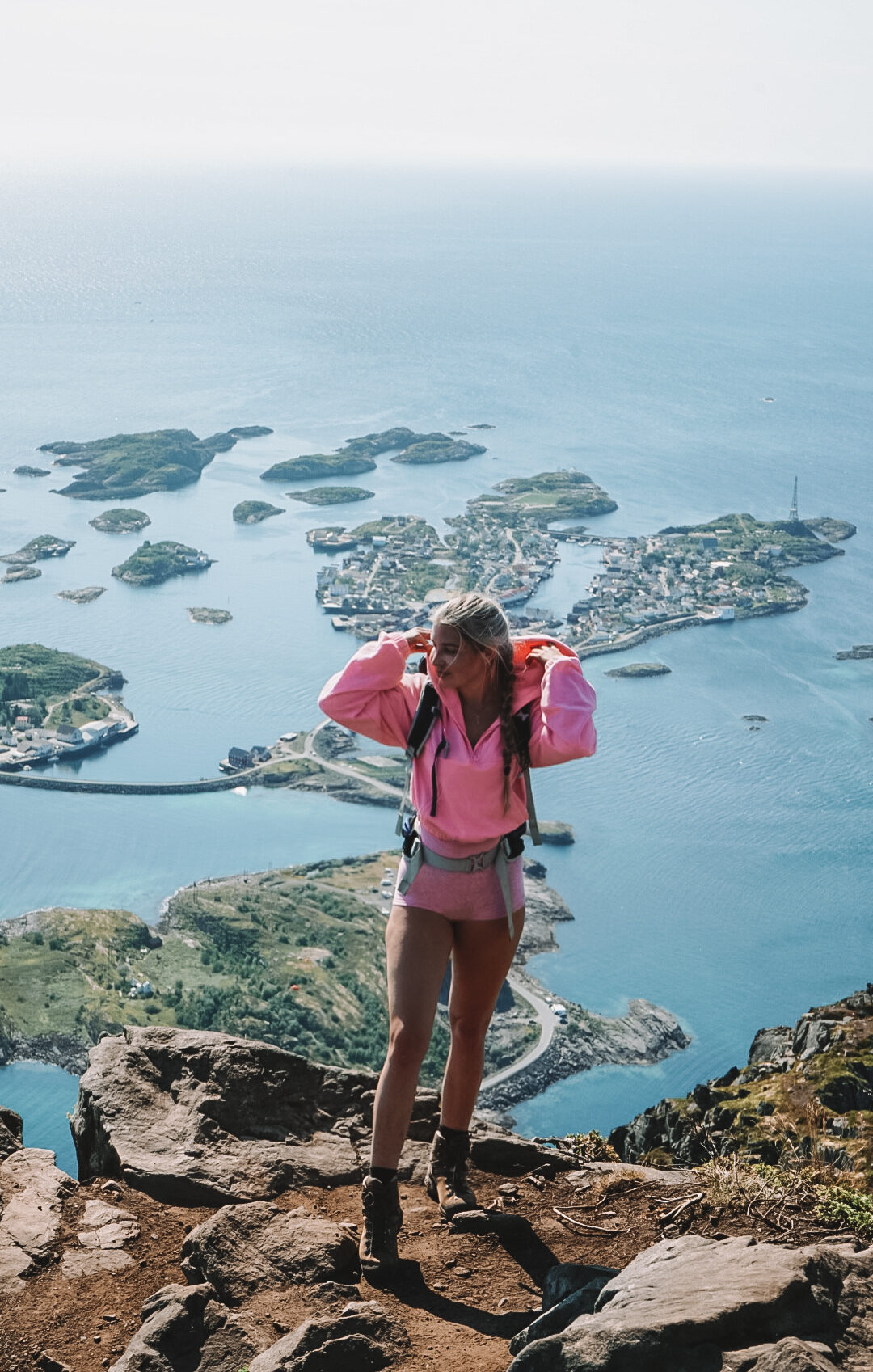
3. Henningsvaer Village and Hike Festvågtind Mountain
For art enthusiasts and stunning views, Henningsvær is the place to be. This charming fishing village sits on tiny islands surrounded by turquoise waters and is overlooked by the imposing Vågakallen mountain. Don't miss the chance to try freshly caught fish or seafood at Fiskekrogen while enjoying the harbor views.
The best way to see the village is by hiking to the top of Festvågtind, a mountain that offers a stunning view from above.
Full guide here: Festvågtind hiking guide.
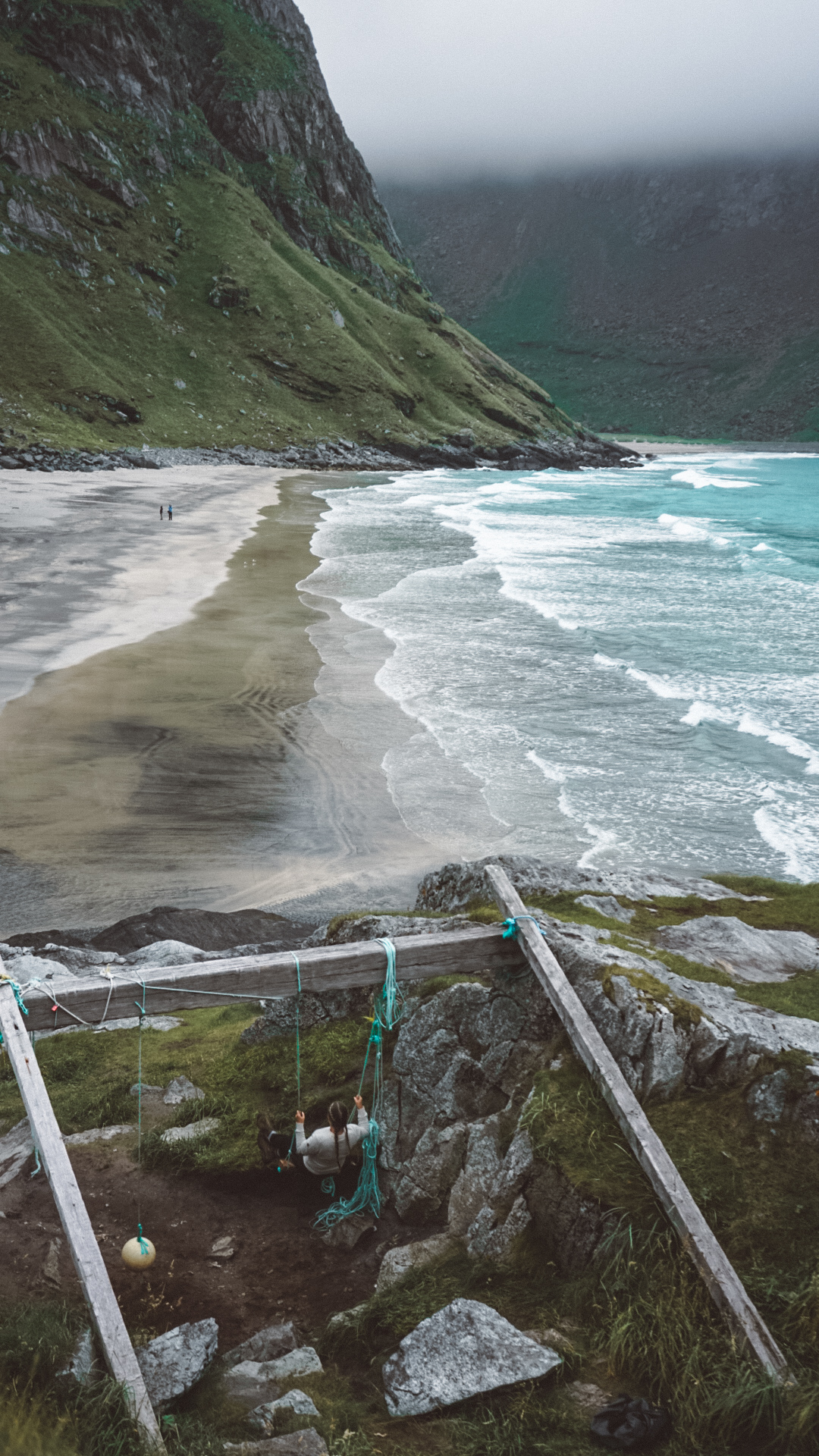
4. Hike to Kvalvika Beach in Lofoten
Forget the Maldives; I've discovered one of the most stunning beaches in the world, and it's right here in Lofoten! Kvalvika Beach will take your breath away with its black and white sand and turquoise sea. To reach the beach, you'll need to hike a small mountain and pass through a saddle between two mountains. The hike is relatively easy and takes about 1-2 hours. Make sure to combine your trip with a hike to the top of Mount Ryten for an even more spectacular view.
[row cols_nr="2"][col size="6"]
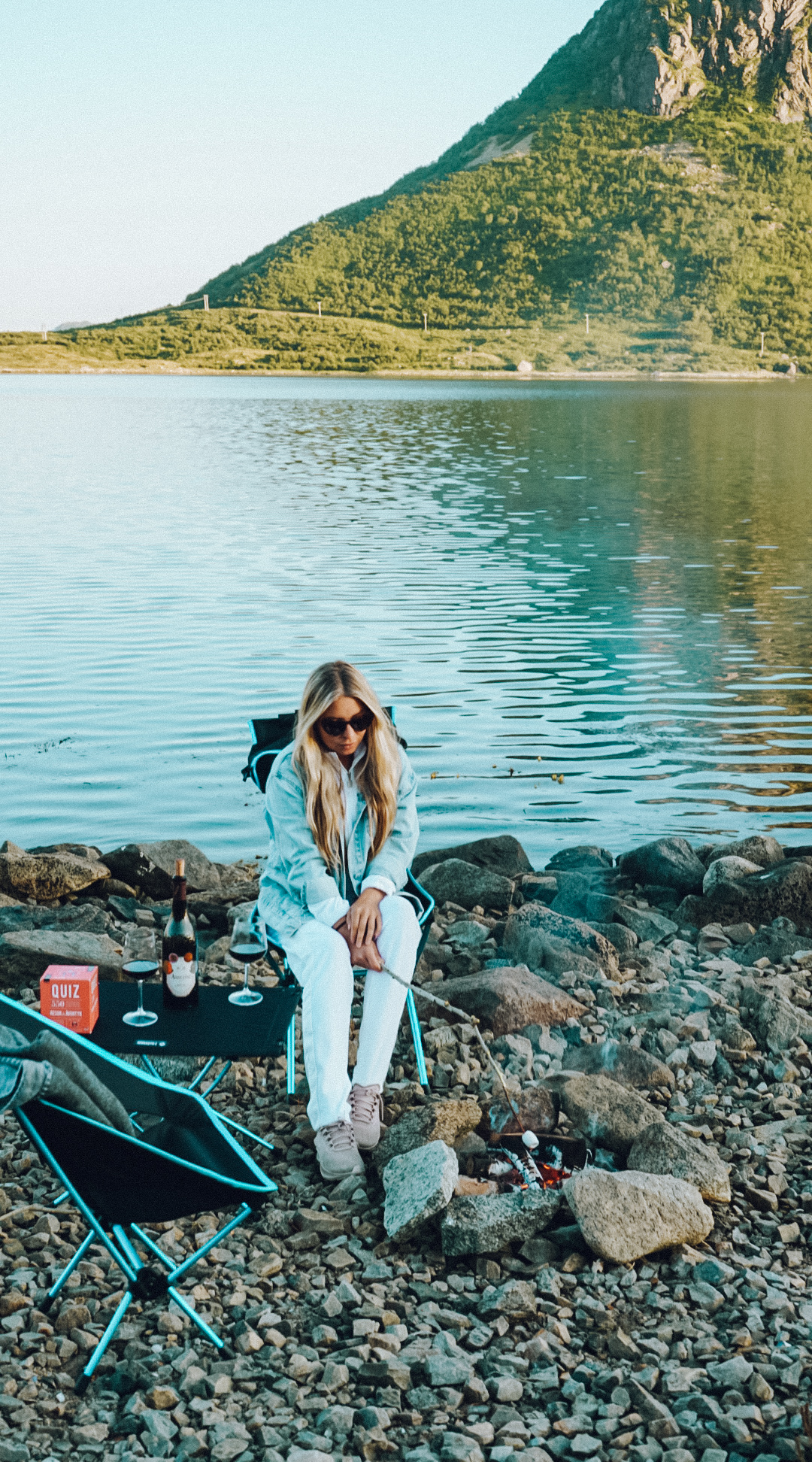
[/col][col size="6"]
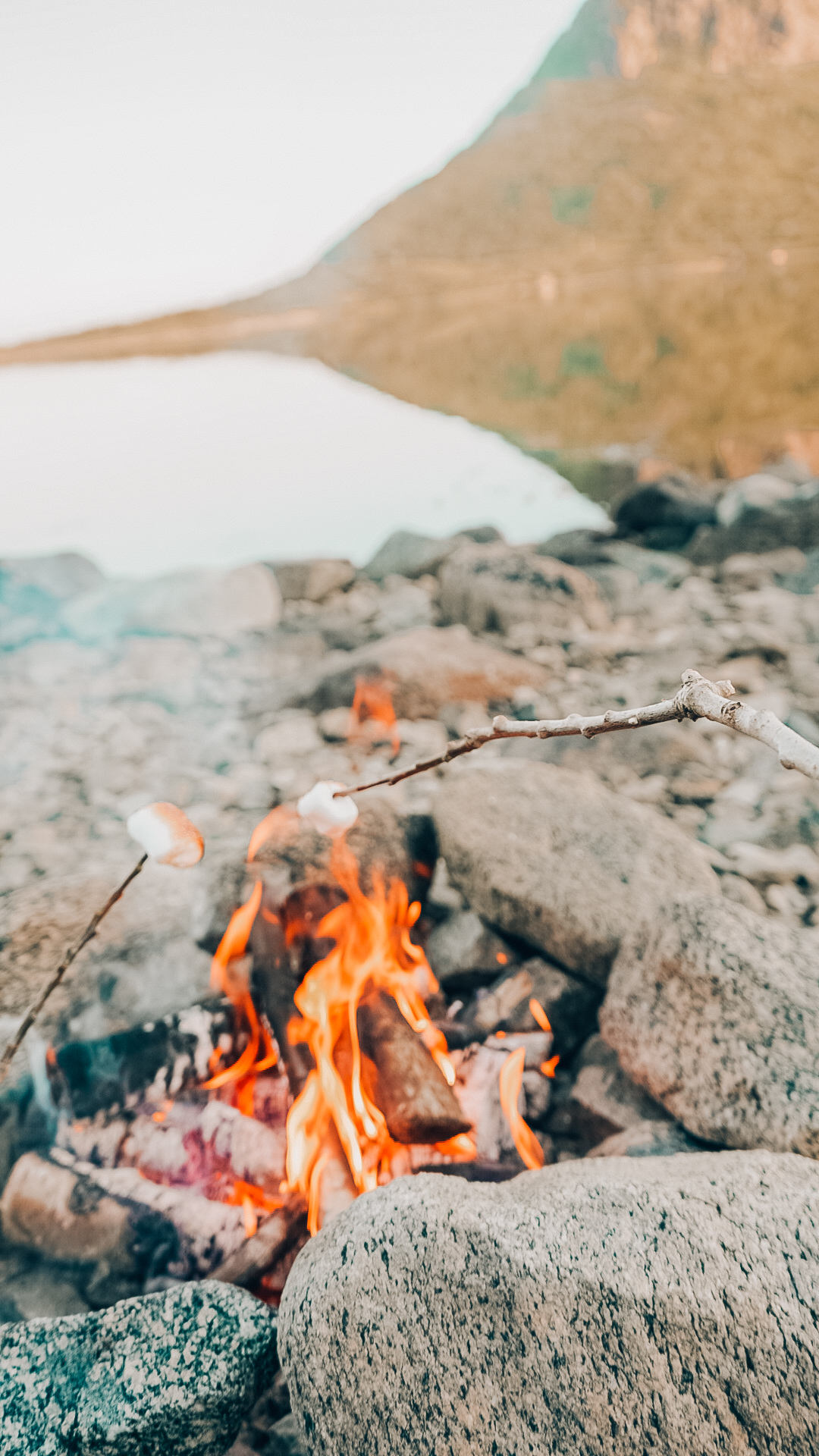
[/col][/row]
5. Haukland Beach / Uttakleiv Beach in Lofoten
Let me introduce you to Haukland Beach, one of Lofoten's most famous sandy spots. With crystal clear blue waters and a backdrop of mountains, this beach is a favorite among visitors and has been voted Norway's best beach. Just a stone's throw away is Uttakleiv Beach, another photographer's paradise.
Tip: If you're up for a scenic hike, you can trek between the two beaches, enjoying the flat terrain and breathtaking views. The trail covers a distance of about 4 km one way and is well-marked, with a pretty flat terrain that makes it suitable for hikers of all levels of fitness.
There we were, my friend and I, braving the howling winds at Haukland beach and Uttakleiv in the mesmerizing Lofoten Islands. Seeking shelter from the gusts, we found solace behind the mighty Offersøykammen, a small peak rising from the turbulent waters of Nappstraumen on the western edge of Vestvågøya. With our camp set up, a crackling fire, and a bottle of wine in hand, we settled in for an enchanting evening as the sun painted the sky with vibrant hues over Offersøykammen.
Getting to Offersøykammen in Lofoten
Offersøykammen is located on the north side of the E-10, just to the east of the Nappstaumen tunnel entrance.
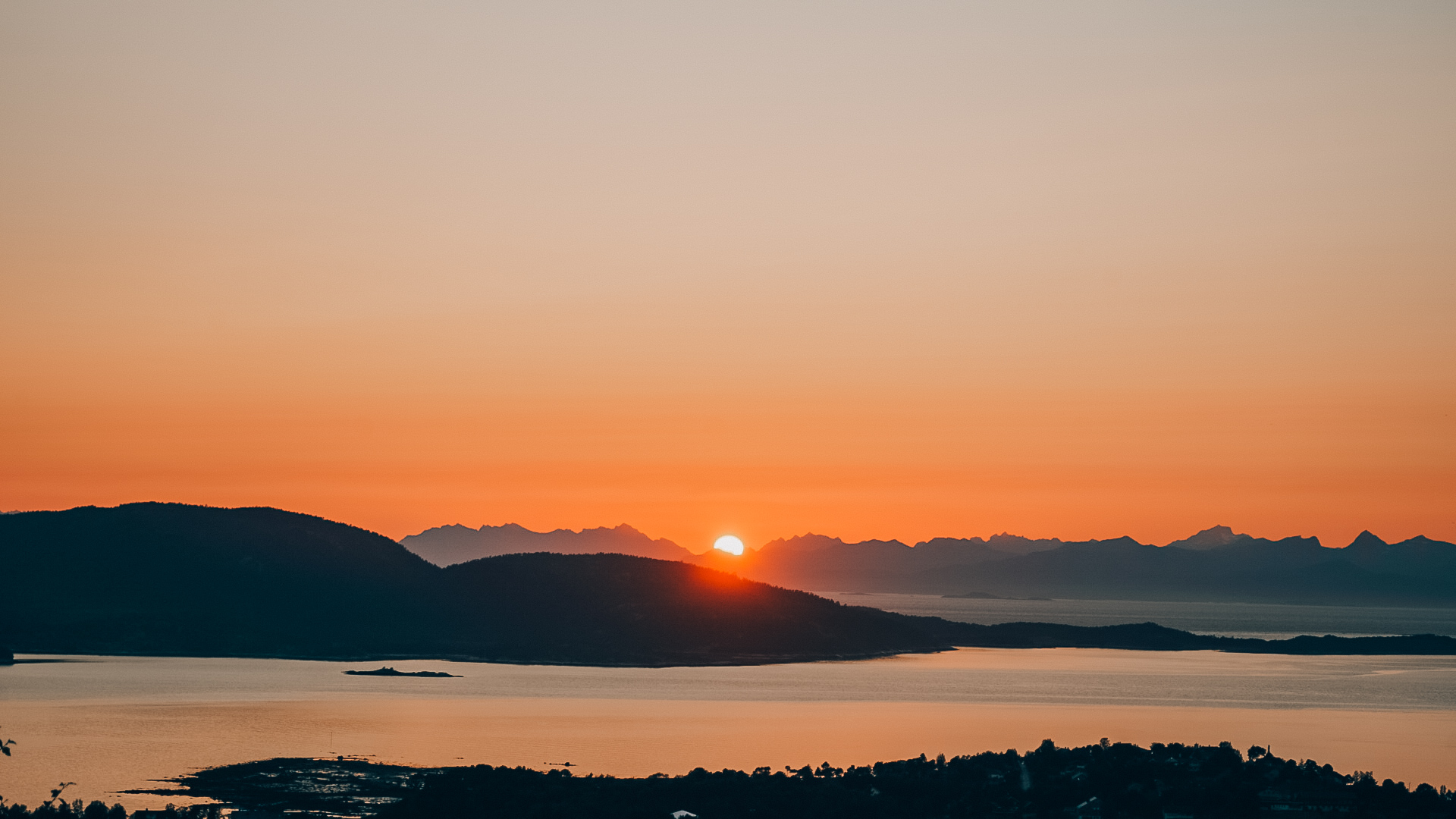
Where is Lofoten?
At an archipelago located in the Norwegian Sea, around 300 km north of the Arctic Circle. The Lofoten Islands stretch for about 150 km, nestled about 50 km west of mainland Norway.
How to get to Lofoten
Now, you might be wondering, how on Earth do you reach this remote paradise? Don't worry, there are several ways to make your way to Lofoten.
Fly to Lofoten
The quickest and easiest option is to hop on a direct flight to Svolvær or Leknes from Oslo or Bodø. You can also consider flying to Evenes for better connections. Once you've landed, you can rent a car or take a bus to Svolvær, which takes about three hours.
Travel by car to Lofoten
If you're up for an adventure, grab a map and hit the road! We personally drove all the way from Stockholm, Sweden, which took around 20 hours of non-stop driving. But hey, you can start your journey from any town in Scandinavia. Just make sure to check the travel time and plan accordingly.
Travel by ferry to Lofoten
The two ferry routes available from Bodø are the Hurtigbåten to Svolvær, which takes about 3.5 hours, and the Moskenes Ferry to the southern tip of Lofoten, which takes about 3 hours. Keep in mind that there is a cost associated with taking the ferry, which is roughly 23€ per person and 94€ per vehicle for one-way travel.
To plan your trip accordingly, check the ferry schedules at ReisNordland.
Another great option to consider is the Hurtigruten, which sails along the entire Norwegian coast and makes a stop in Svolvær. This means you could take the Hurtigruten from Bergen north to Lofoten or from Tromsø and head south.
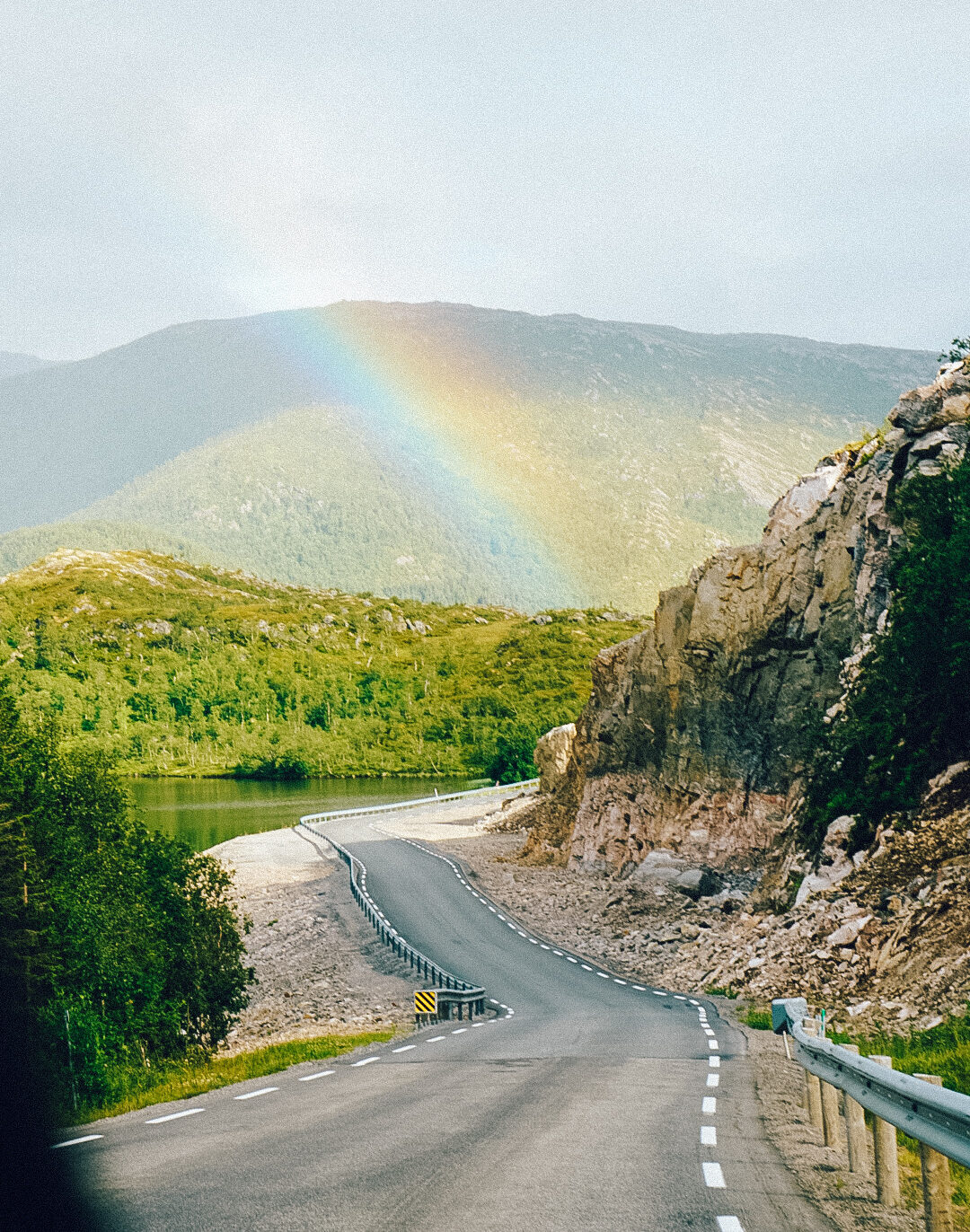
How to travel around Lofoten
Lofoten is best explored by having your own car. You can rent a car in Svolvær or Leknes (rentalcars.com), which compare prices from the biggest rental car firms like Hertz and Avis. Camper van rentals are also available and a popular option is the classic VW campers from Lofoten Van Life.
In the summer you can take the Lofoten Sightseeing and Shuttle boat, from Svolvær to Å with several stops along the way.
While you can travel around Lofoten by local bus, you would need to plan extremely well since routes are limited and buses do not run very frequently. Check the timetables and routes carefully.
A good deal is the Travel Pass Nordland – 995 Nkr (adults)/ 495 NKr (children) for 7 days of unlimited travel by bus and ferry.
[row cols_nr="2"][col size="6"]
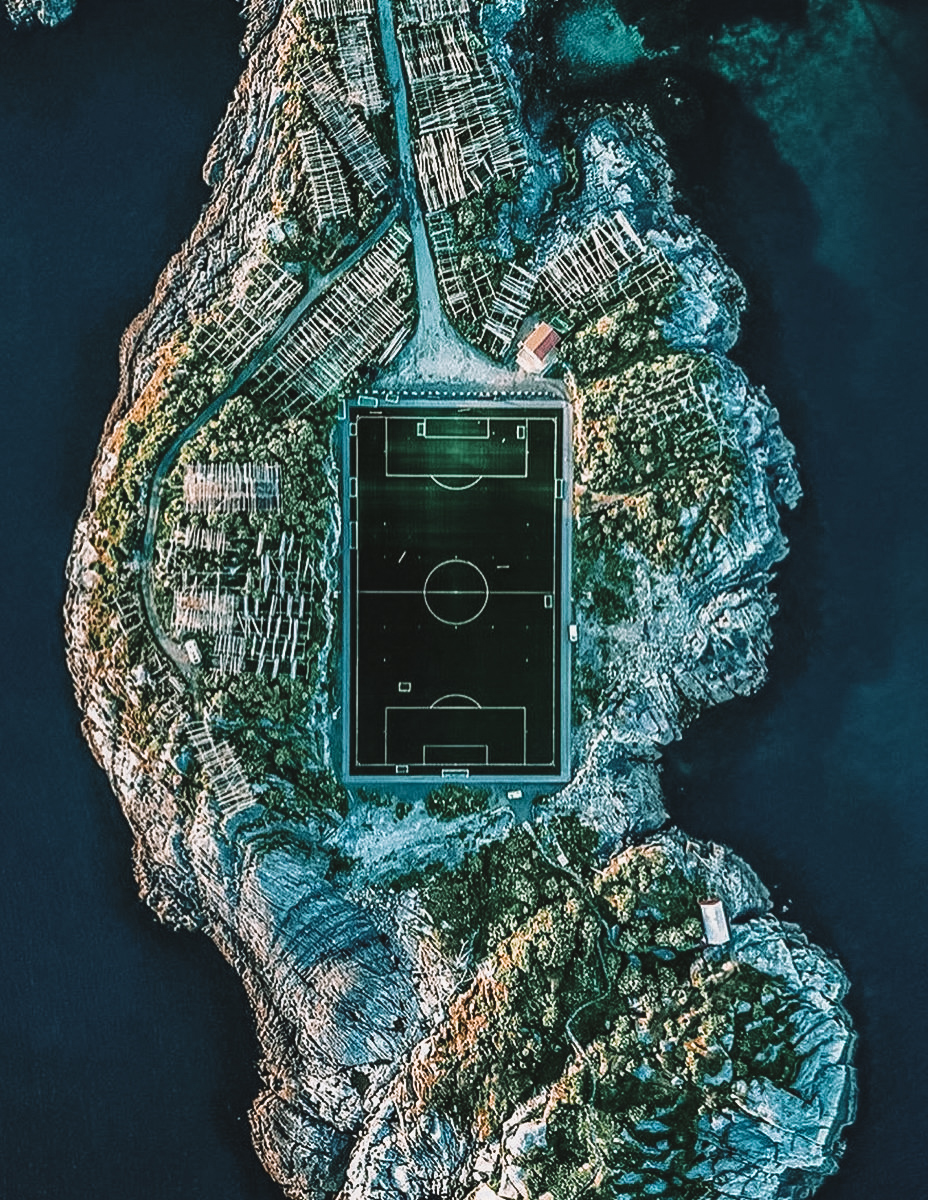
[/col][col size="6"]
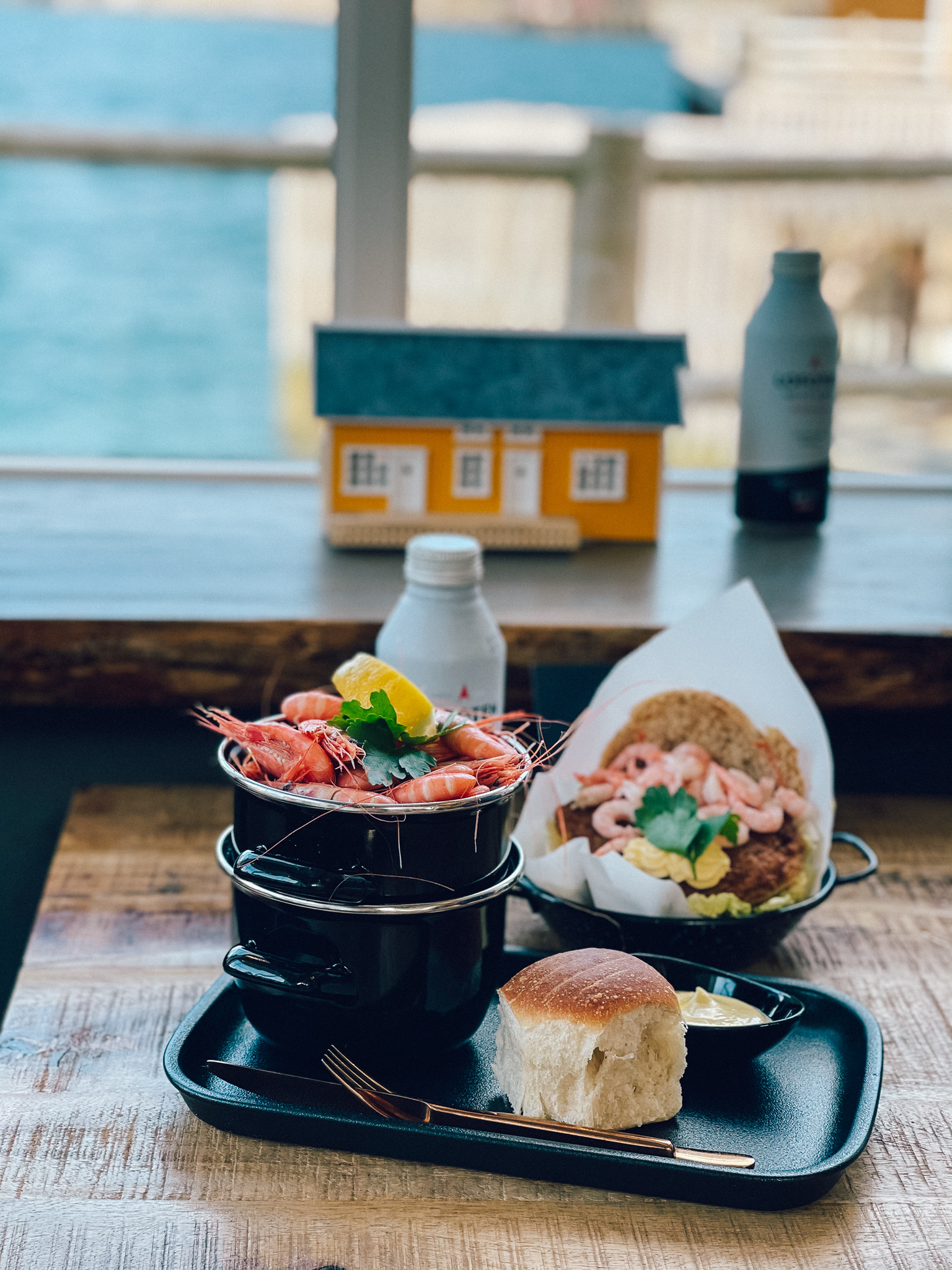
[/col][/row]
[dropcap custom_class="bl"]
When to Go to Lofoten
Timing is everything, my friends. The peak season in Lofoten is July when the island buzzes with tourists. But if you want to enjoy milder weather and longer days, visit from May to September. June to mid-July offers the incredible midnight sun experience, perfect for hiking and outdoor activities.
Now, if you're a winter enthusiast, mark your calendars from early December to early January. Witness the magic of the Northern Lights with the sun never rising above the horizon. For the ultimate winter wonderland experience, plan your visit in February and March when the sun shines during the day, and the aurora borealis dances at night.
[/dropcap]
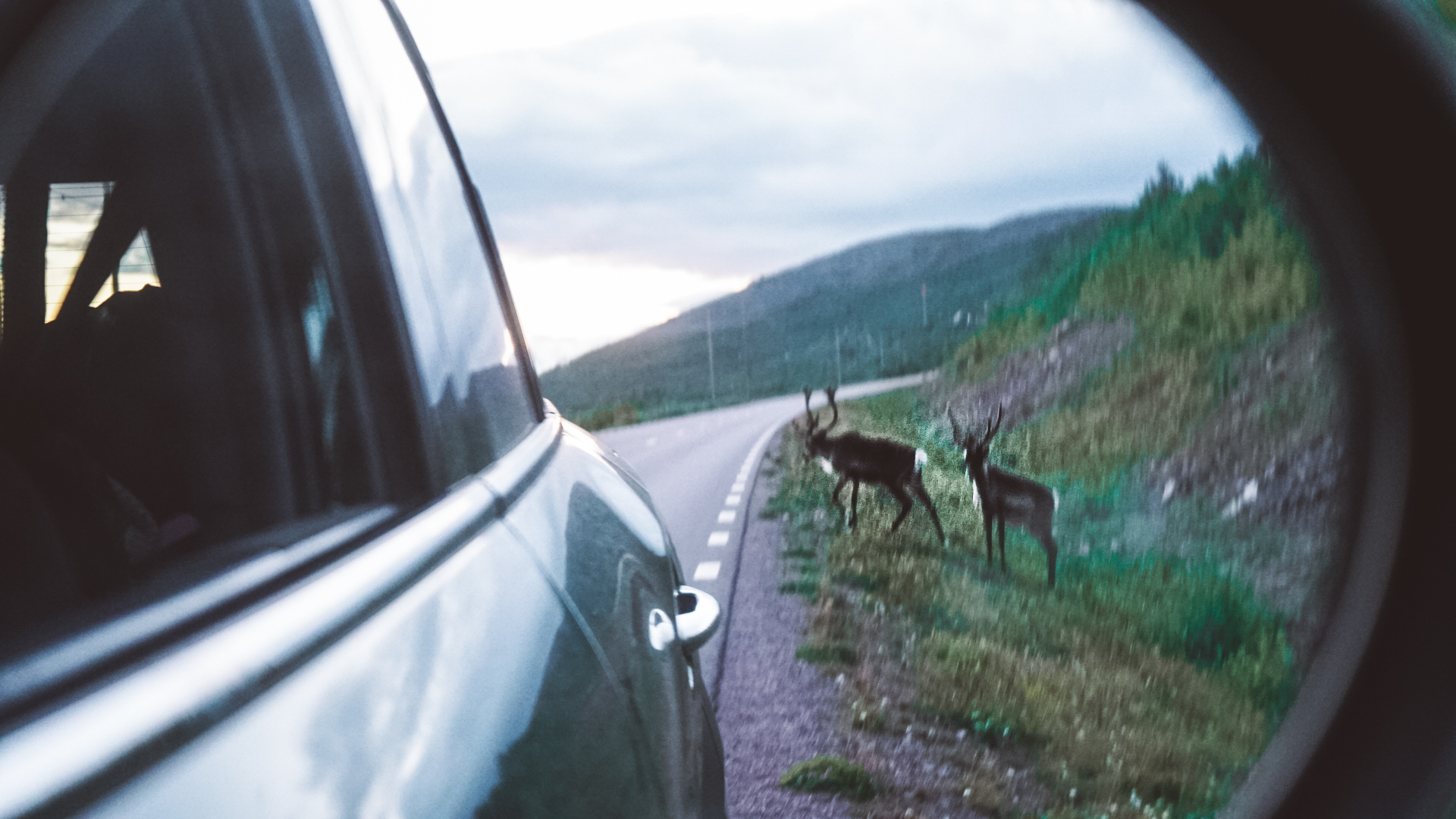
What to Pack for a Trip to Lofoten?
When it comes to the weather in Lofoten, you can never be too sure. It's like a box of chocolates, you never know what you're gonna get. So, my best advice? Check the Yr website or app as much as possible (even though it's not always accurate, but hey, better safe than sorry).
Now, when it comes to clothing, layering is key. You don't want to be caught off guard if the sun decides to make an appearance or if a storm suddenly rolls in. So make sure you have the right gear in your backpack at all times. That means a wind and waterproof jacket and trousers, gloves, and a beanie. And if you're planning on doing any hiking, don't forget to pack a good pair of hiking boots too.
Rain Gear: Lofoten weather is like a box of chocolates - you never know what you're gonna get. Be sure to bring a windproof and waterproof jacket and trousers to stay protected from rain or unexpected storms. Don't forget gloves and a beanie to keep warm!
Layers:Layering is the key to staying comfortable in Lofoten's unpredictable climate. Pack fleece-lined leggings, thermal tops, and sports socks to keep cozy and adaptable to temperature changes.
Winter Gear: If you're visiting during the winter months, don't forget to pack snow pants, a down jacket, a beanie, a scarf, and snow boots. Embrace the magical snowy landscape while staying snug and stylish.
Beach Attire: Planning to visit a spa, beach, or try your hand at surfing? Remember to pack a swimsuit or wetsuit, along with a quick-drying towel. You never know when you might stumble upon a hidden gem of a beach in Lofoten!
Camping Cost in Lofoten (20€ to 30€ per night)
Lofoten offers a range of accommodation options to suit every traveler's preference and budget. For an affordable and adventurous experience, consider camping in Lofoten. Prices range from around €20 to €30 per night for two people with a tent and a car. Campgrounds usually provide heated common rooms, kitchens, and toilets. Just remember that hot showers may require an extra fee.
Wild Camping in Lofoten (Free)
Norway has a unique law called 'Allemansrätt' or 'every man's right,' allowing you to camp almost anywhere that is not private property. Take advantage of this law to discover hidden and isolated spots in Lofoten without spending a penny on accommodation.
Price for Staying in a Hotel in Lofoten
If you prefer more traditional accommodation, Lofoten offers a range of hotels and private cabins. Prices can vary, especially during the peak summer season (around €250-350 per night). However, with some research and flexibility, you can find more affordable options, especially during the winter season.

Is Norway Expensive?
Let's address the elephant in the room - Norway can be pricey. However, don't let that discourage you from experiencing the wonders of Lofoten. While high-end accommodations, fancy restaurants, and expensive excursions can add up, there are plenty of budget-friendly alternatives. Camping, cooking your own meals, and exploring the outdoors offer incredible experiences without breaking the bank. Remember, the natural beauty of Lofoten is worth every penny!










6 Comments